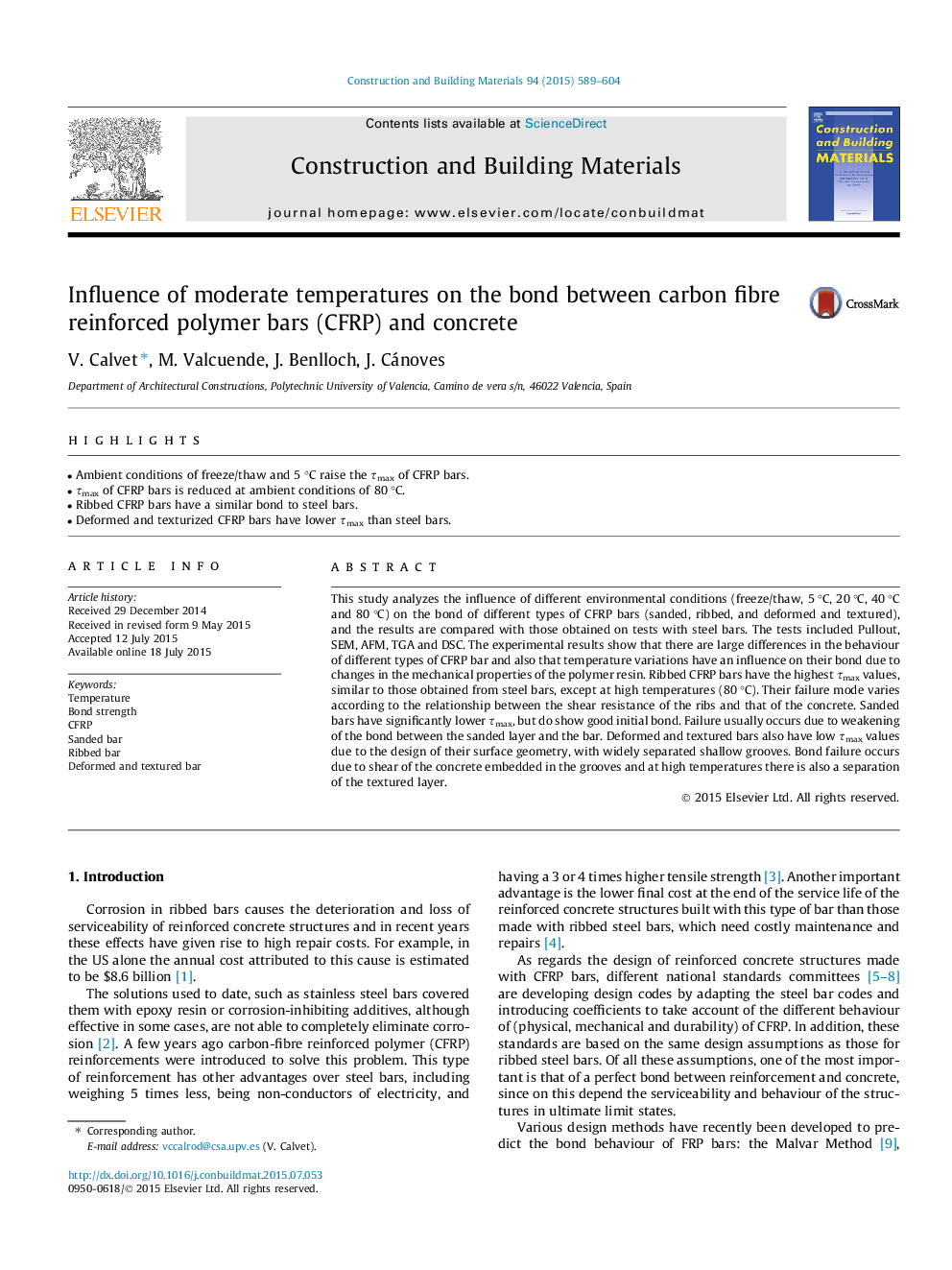| Article ID | Journal | Published Year | Pages | File Type |
|---|---|---|---|---|
| 6720638 | Construction and Building Materials | 2015 | 16 Pages |
Abstract
This study analyzes the influence of different environmental conditions (freeze/thaw, 5 °C, 20 °C, 40 °C and 80 °C) on the bond of different types of CFRP bars (sanded, ribbed, and deformed and textured), and the results are compared with those obtained on tests with steel bars. The tests included Pullout, SEM, AFM, TGA and DSC. The experimental results show that there are large differences in the behaviour of different types of CFRP bar and also that temperature variations have an influence on their bond due to changes in the mechanical properties of the polymer resin. Ribbed CFRP bars have the highest Ïmax values, similar to those obtained from steel bars, except at high temperatures (80 °C). Their failure mode varies according to the relationship between the shear resistance of the ribs and that of the concrete. Sanded bars have significantly lower Ïmax, but do show good initial bond. Failure usually occurs due to weakening of the bond between the sanded layer and the bar. Deformed and textured bars also have low Ïmax values due to the design of their surface geometry, with widely separated shallow grooves. Bond failure occurs due to shear of the concrete embedded in the grooves and at high temperatures there is also a separation of the textured layer.
Keywords
Related Topics
Physical Sciences and Engineering
Engineering
Civil and Structural Engineering
Authors
V. Calvet, M. Valcuende, J. Benlloch, J. Cánoves,
